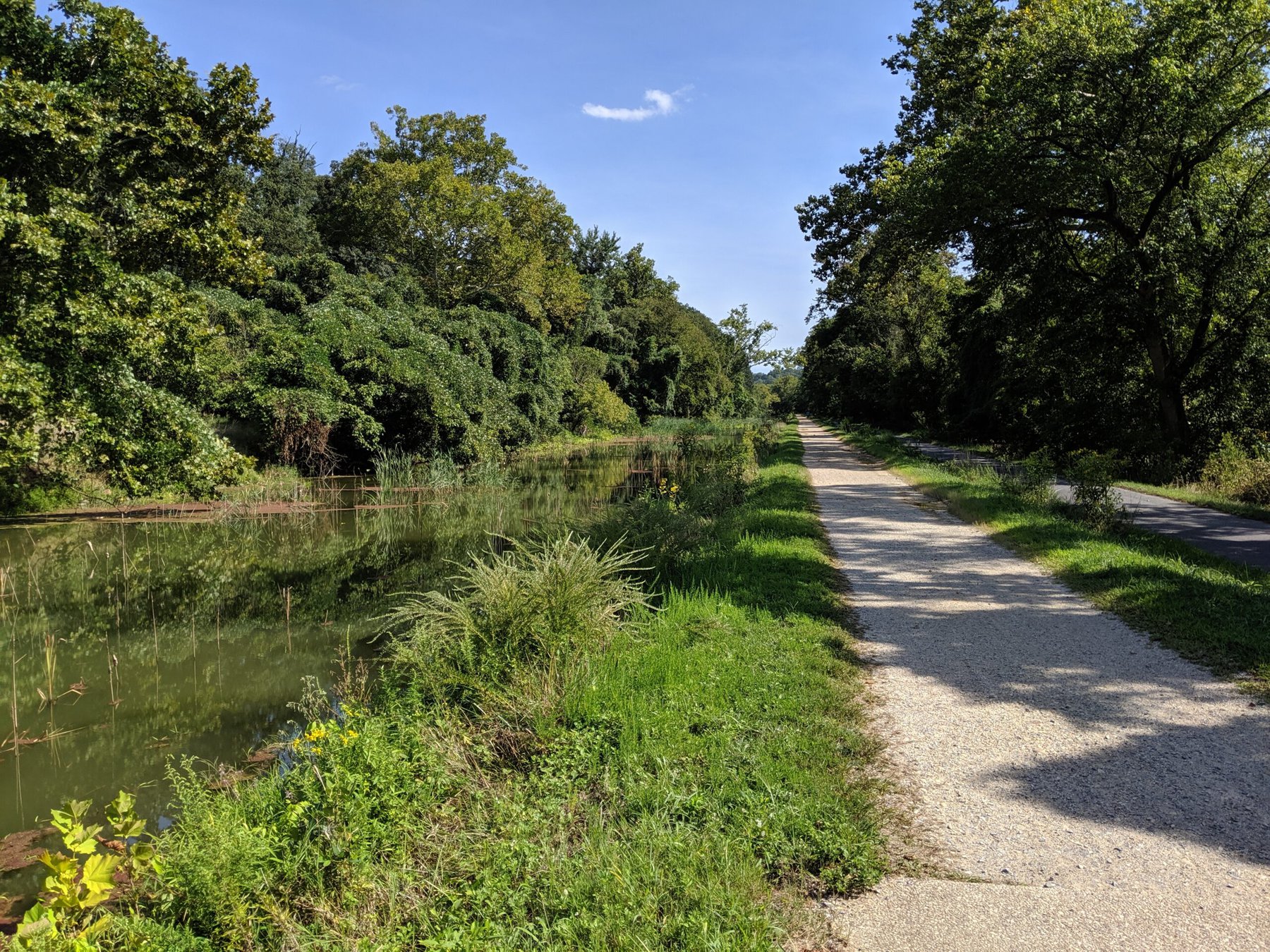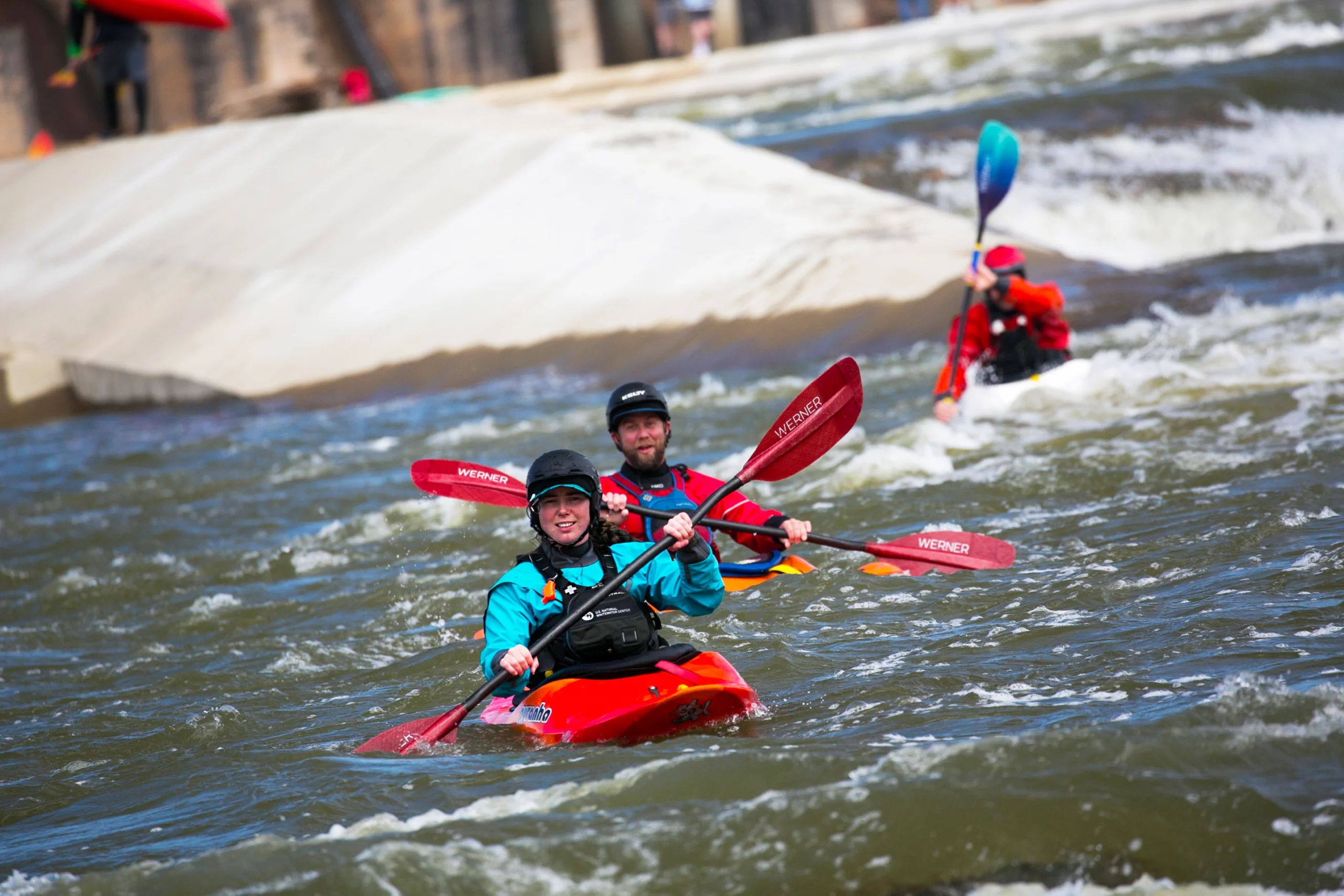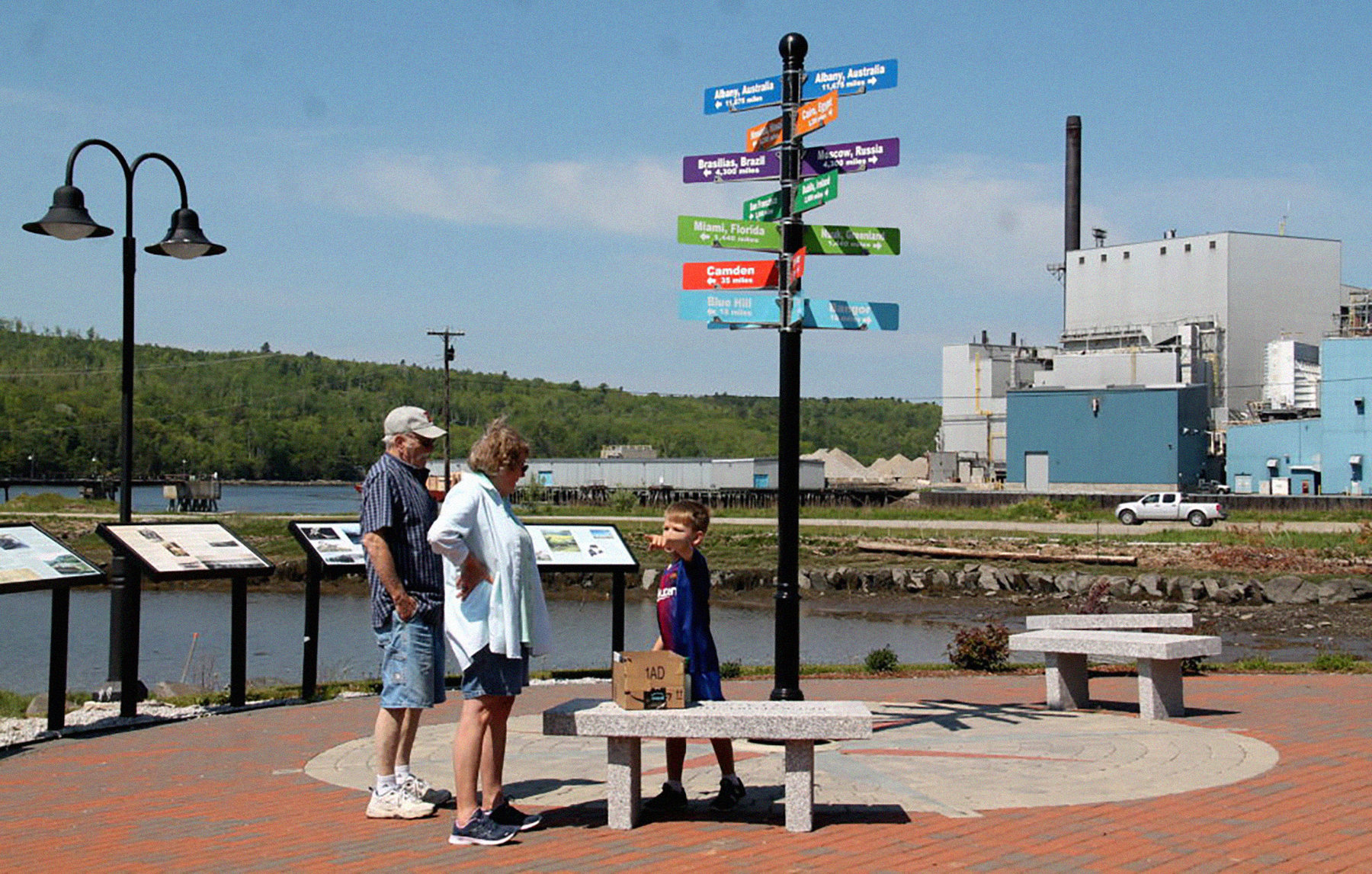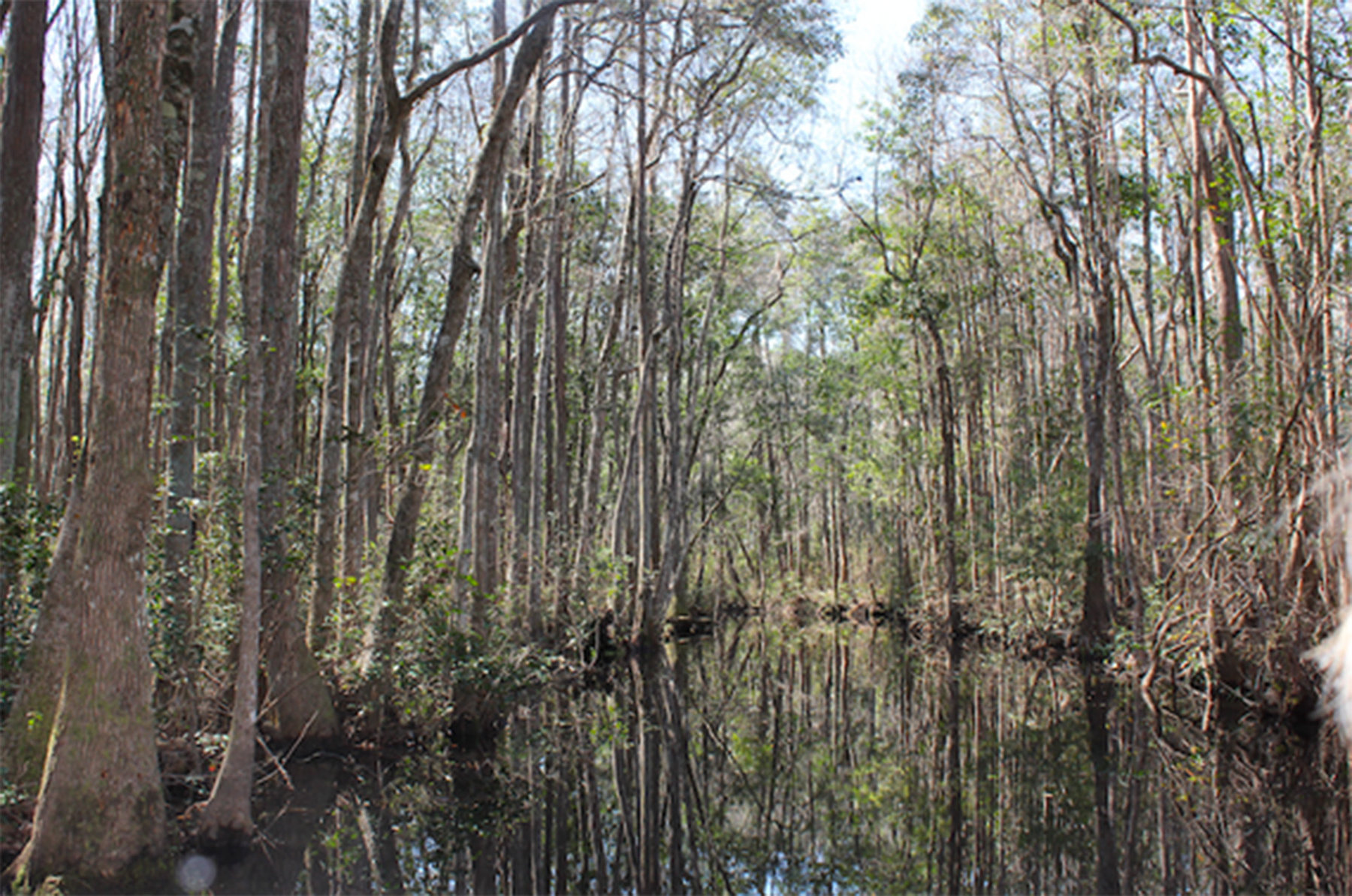“Every town has a river walk, even if it doesn’t have a river”
This has become a family mantra in our household, since we began noticing so many busy and bucolic public walks and trails during our town travels. We found them following rivers or lakes, but sometimes tracking railbeds or winding through fields or parks or marshes.
In the U.S., the River Walk in San Antonio was the early favorite that probably inspired the trend. The idea of today’s San Antonio River Walk emerged from the response to a costly flood nearly 100 years ago. Plans for a dam, objections from a conservation group, and a vision for something altogether different – a river walk – carried on for almost two decades. WPA funding in 1939 propelled the project ahead, and it opened to the World’s Fair visitors in 1968.
River walks can drive tremendous economic returns, as is the case in San Antonio. Or they can focus more on healthy opportunities to keep residents moving, or act as impromptu gathering places where old meet young, tourists meet natives, and residents who usually travel in different social and economic circles find each other eye to eye. River walks often celebrate the natural assets of an area, and offer anyone and everyone a chance to enjoy them.
Here are a few of my favorites: Seattle’s wetlands boardwalks. Greenville, South Carolina’s 22-mile Swamp Rabbit Trail along the Reedy River; the Capital Crescent Trail running between the C&O canal and the Potomac River in our hometown of Washington, D.C.; the 29-mile hike and bike trail circling Sioux Falls; Redlands, California‘s Orange Blossom Trail, upgrading both the urban and undeveloped spaces; Duluth, Minnesota’s Lakewalk along the shores of Lake Superior; Danville, Virginia’s tree canopied Riverwalk Trail along the Dan River. My list grows and grows.
When I caught up with our friends from Bucksport, Maine recently, one of my ambitions was to find out more about its river walk, the waterfront development called the Walkway, which we had first seen during a visit last summer to learn about the town’s ambitious citizen-led town development process called Community Heart & Soul ® (CH&S). (CH&S is a partner and supporter of Our Towns reports.)
Now, in the depths of winter and still wary of Covid, we settled on the next-best electronic and telephone exchanges to reconnect. I talked by phone with Nancy Minott, who was the original coordinator for the H&S efforts and is now a trustee of the Buck Memorial Library.
Talking through the items on Bucksport’s action plan for Community Heart & Soul, we were both amazed at how far the town had moved along and even beyond the list of improvements that they drew up a few years ago. Here are some: upgraded playground and public pool; transportation assistance to medical appointments for seniors; a creative matching-multiplier program to support local merchants; cooking classes; community gardens; new rental apartment development; history center and museum development; computer classes for seniors; street, sidewalk, and trail improvements; downtown beautification projects; wireless internet inside and outside the library. The list is still building.

Bucksport’s waterfront is a major natural asset, set along the shore where the Eastern Channel meets the mighty Penobscot River, with a view of the elegant Penobscot Narrows Bridge, flanked upstream by historic Fort Knox, which seems to grow right out of the steep hillside.
The Walkway runs the length of a good mile, just a stone’s throw downhill from Main Street. More than 20 years in the making, the Walkway already serves multiple purposes as a social gathering place, an economic stimulator, a healthy-living opportunity, an environmental improvement zone, a town beautifier, a record of history, a perspective on the town’s place on earth, a celebration of local identity, art, and creativity. But… and it’s a big but… at the far end of the Walkway looms the reminder of one of Bucksport’s biggest shocks and remaining challenges – the depression-era paper mill, described by the Ellsworth American in the winter of 1929-30 as “one of the greatest industrial projects undertaken in the New England states in recent years.” The mill, opened in 1930 and long the economic core of the town, closed in 2014, taking away some 600 jobs and the flow-over economy. The theme of my previous piece was how the mill’s closure had become a catalyst for Bucksport’s current reinvention. The future of the mill property is another big upcoming event for the town.
First, the Walkway highlights.

If you’re driving north along Coastal Route 1 and heading Down East, (directions around here are always a geographic tromp l’oeil for those of us “from away”) you’ll cross the Penobscot Narrows Bridge, and then the smaller Eastern Channel Bridge. At its end and just below is Veterans Park, a kind of pedestrian gateway built in 2009, with a memorial and engraved stones.
Bucksport reminds residents and informs visitors of its more than 200-year history with a series of engraved plaques and granite benches honoring remarkable citizens or statements or events. Young Maine sculptor Matthew Foster created his granite work, Before the Wind, for the children and future generations of Bucksport. He writes in his artist’s statement, of its message for the children: “First, that they never dismiss their heritage, but instead return to it often; second, that the wind is always to their backs, propelling them forward, like a ship running before the wind.”

A second small yet powerful sculpture stands in its lee. This is Whale, by Don Justin Meserve, a celebrated Maine sculptor, who died a little more than a decade ago.
The Covid era is already marked by a granite bench from the Class of 2020 at Bucksport High School, engraved with the disarming and poignant words “Inspiration during Isolation.” I talked by phone with Jen Skala, who was the class of 2020’s adviser at the high school for their four years, about the back story of the bench.

During the simpler days of 2019, the class of 2020 had been busy raising funds in anticipation of their class trip to Boston, including their chosen highlights of a water park visit and a Red Sox game. They had raised enough money to cover all the costs for the 70-some class members. Then Covid hit, and the school doors slammed shut in March of 2020. Part of the collateral damage: trip cancelled. The class huddled and (magnanimously) decided to use part of the funds to give back to the community of Bucksport, which had generously supported them in their fundraising efforts and at school events. The class noticed the model of the Class of 1950, and their granite bench along the Walkway. Now, 70 years later, there would be another, marking a heavy moment in the town’s history and lasting for the ages. The class did more, creating two $500 scholarships for classes that would follow them, for students to pursue any kind of continuing education, be it community college, trade schools, or four-year college.
For recreation and commerce, Bucksport built out the Town Marina’s access to boats, added a diesel fuel pump, began to rebuild its floating docks, and replaced its fishing pier. Plans for a year-round dock structure with handicapped accessibility are in the works.

The American Cruise Lines has included Bucksport as a port of call for its passenger ships. And Bucksport is approaching the Pan Am Railways System (soon to be part of CSX) about securing the unused properties at the end of their Bucksport Branch for new business and commercial expansion. On a personal scale, as of 2021, vendors were granted permits, scaling up festivals and gatherings, like Arts Festival, Ghoulsport, the Penobscot Maritime Heritage Event, and Bucksport Pride.

Set in an observation lookout of the Walkway, Picnic Point, is a five-panel story panorama of Bucksport’s history. The offset‘s 10-foot diameter compass rose is laid in the bricks, and in its center, reinforcing Bucksport’s plucky, self-aware, colloquial identifier as “Center of the Known Universe” is a tall pole with directional arrows: Cairo – 5200 miles away, Moscow – 4300, and Albany, Australia – 11,675. There are fountains and picnic benches, plenty of summer flowers, and a gazebo all along the path.

My favorite section of the Walkway for people-engagement is the Story Walk and the accompanying exercise prompts. In 2018, the Buck Memorial Library volunteers installed the first of its rotating series to celebrate favorite children’s books with illustrated pages mounted on sign posts. Beneath the book pages, more signs encourage children to Take Baby Steps, Skip, Gallop like a Horse, and Walk like a Duck.
Approaching the western end of the Walkway, I was hoping to find my way to a closer view of the old paper mill. It is hard to imagine the former bustling life and work inside and around the mill. I corresponded with Sue Lessard, Bucksport’s indefatigable town manager, to guide me into the future of what might happen with the old mill. It turns out: plenty.
The mill and its properties, having gone through a series of changes and acquisitions since its closure in 2014, are now divvied into ownership by three different companies. Whole Oceans, a land-based producer of farm-raised salmon, retains a permit until the end of 2023 for a “recirculating aquaculture system” to grow an annual 5000 metric tons of salmon. Announcements forthcoming. The Maine Maritime Academy, up the road in Castine, has a Mariner Training Institute up and running. They are planning expansions. Ironclad Energy, a company that deals in power generating properties, bought the plant’s backup power generating facility.
At the end of our book, Our Towns, Jim wrote about the “10 1/2 signs of civic success” that we saw and learned about from the successful towns we visited. I think it is probably time to update that list, to add River Walk and make it 11 1/2 signs.




